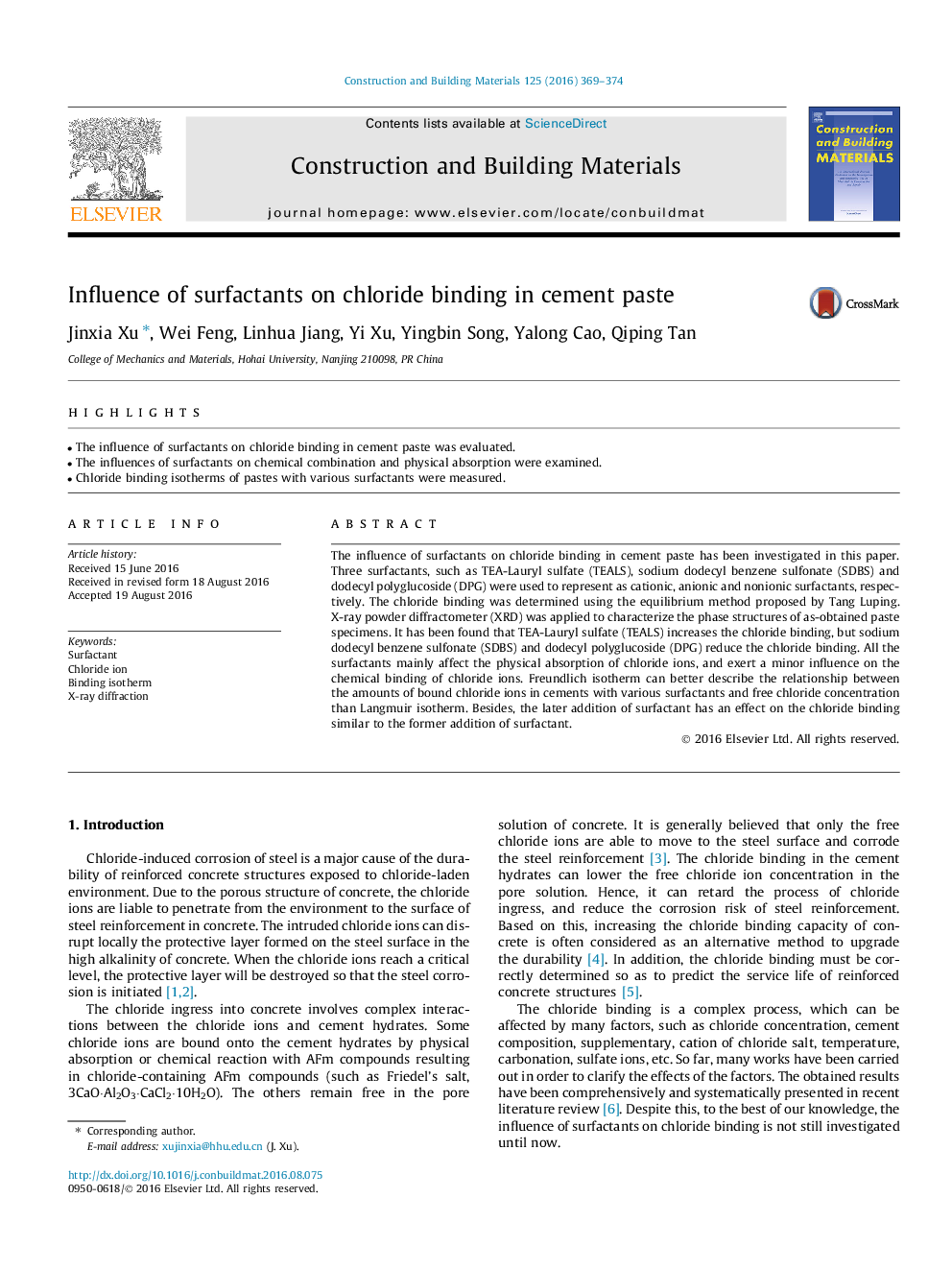| Article ID | Journal | Published Year | Pages | File Type |
|---|---|---|---|---|
| 4918625 | Construction and Building Materials | 2016 | 6 Pages |
Abstract
The influence of surfactants on chloride binding in cement paste has been investigated in this paper. Three surfactants, such as TEA-Lauryl sulfate (TEALS), sodium dodecyl benzene sulfonate (SDBS) and dodecyl polyglucoside (DPG) were used to represent as cationic, anionic and nonionic surfactants, respectively. The chloride binding was determined using the equilibrium method proposed by Tang Luping. X-ray powder diffractometer (XRD) was applied to characterize the phase structures of as-obtained paste specimens. It has been found that TEA-Lauryl sulfate (TEALS) increases the chloride binding, but sodium dodecyl benzene sulfonate (SDBS) and dodecyl polyglucoside (DPG) reduce the chloride binding. All the surfactants mainly affect the physical absorption of chloride ions, and exert a minor influence on the chemical binding of chloride ions. Freundlich isotherm can better describe the relationship between the amounts of bound chloride ions in cements with various surfactants and free chloride concentration than Langmuir isotherm. Besides, the later addition of surfactant has an effect on the chloride binding similar to the former addition of surfactant.
Related Topics
Physical Sciences and Engineering
Engineering
Civil and Structural Engineering
Authors
Jinxia Xu, Wei Feng, Linhua Jiang, Yi Xu, Yingbin Song, Yalong Cao, Qiping Tan,
